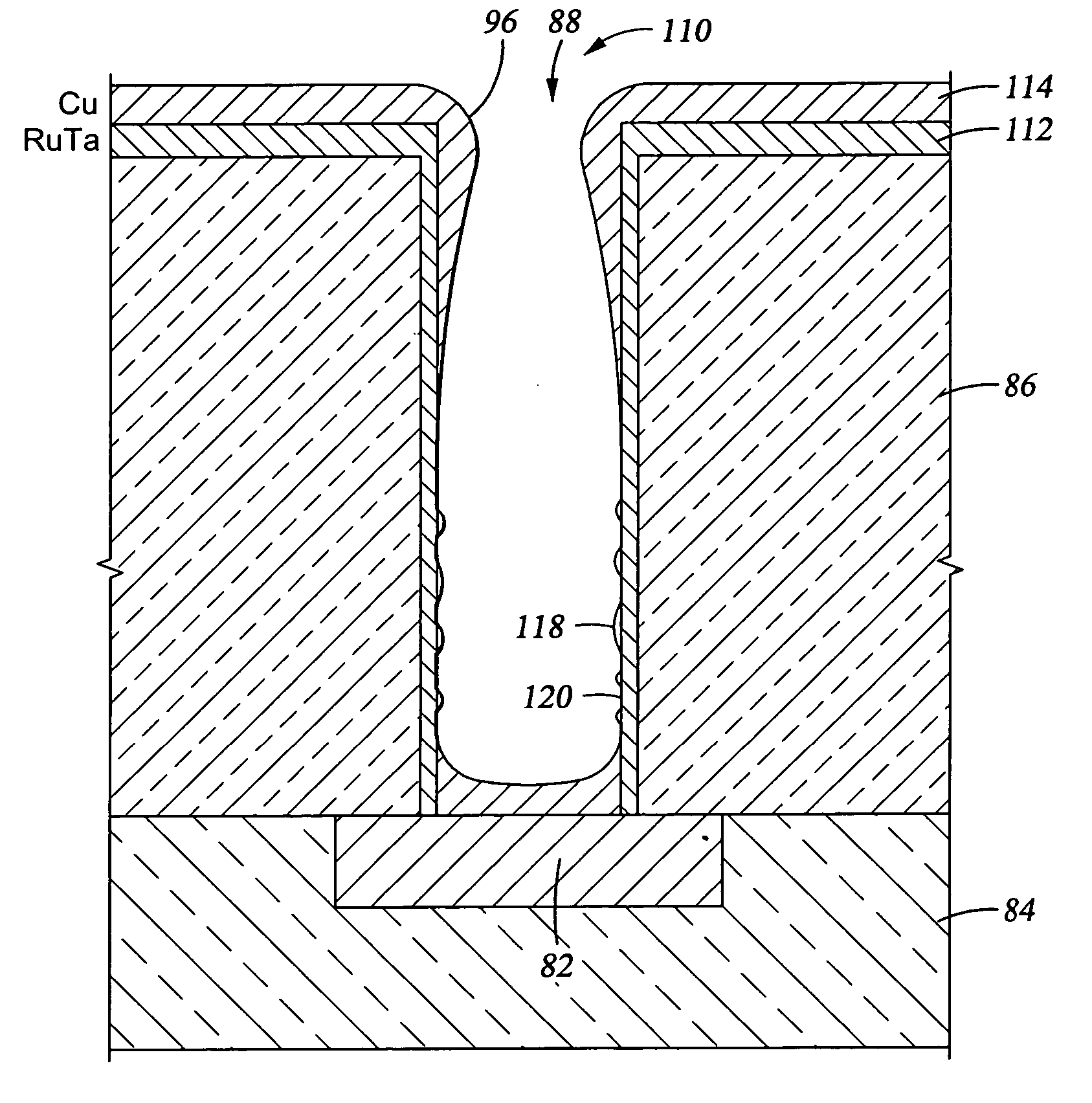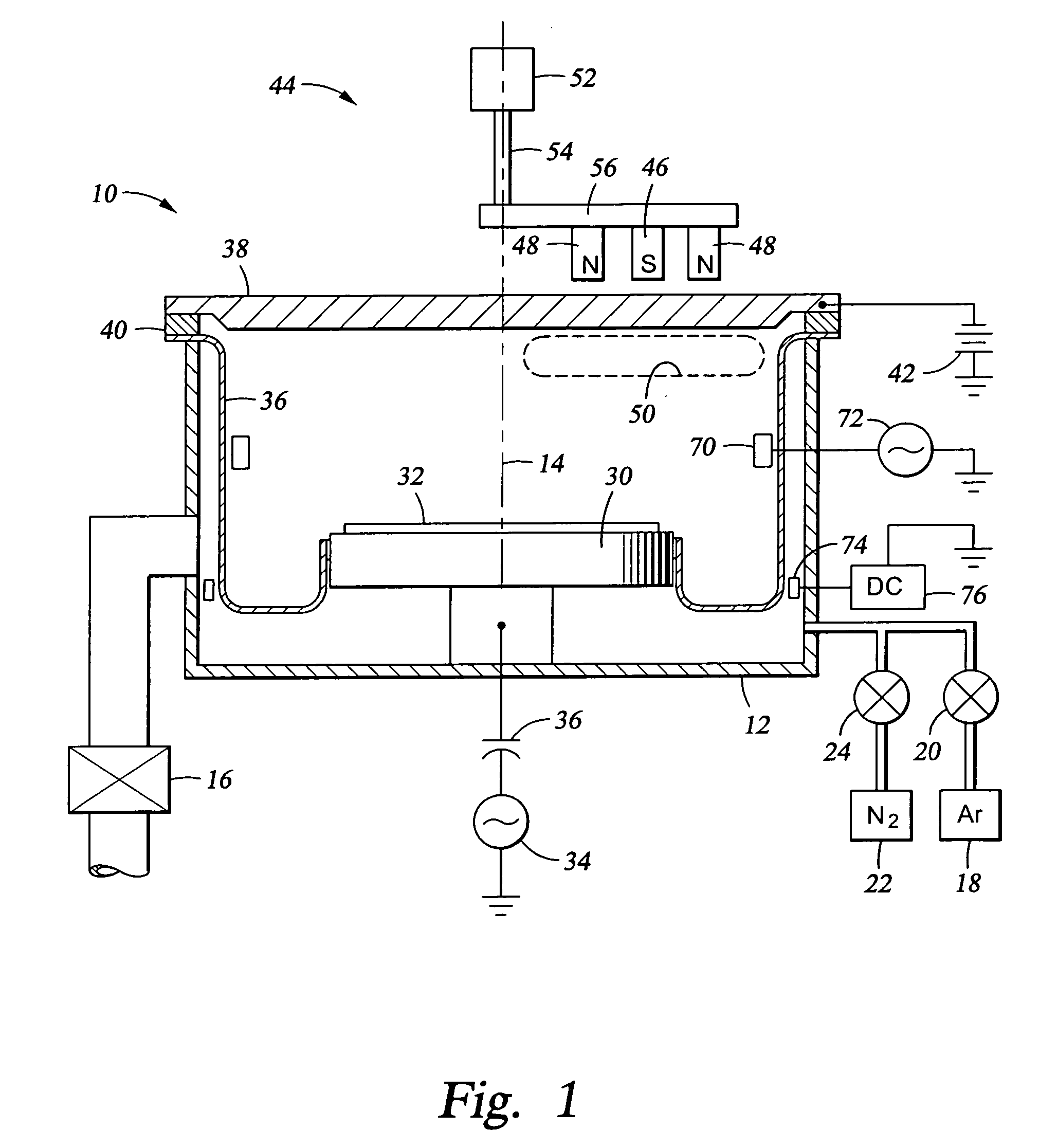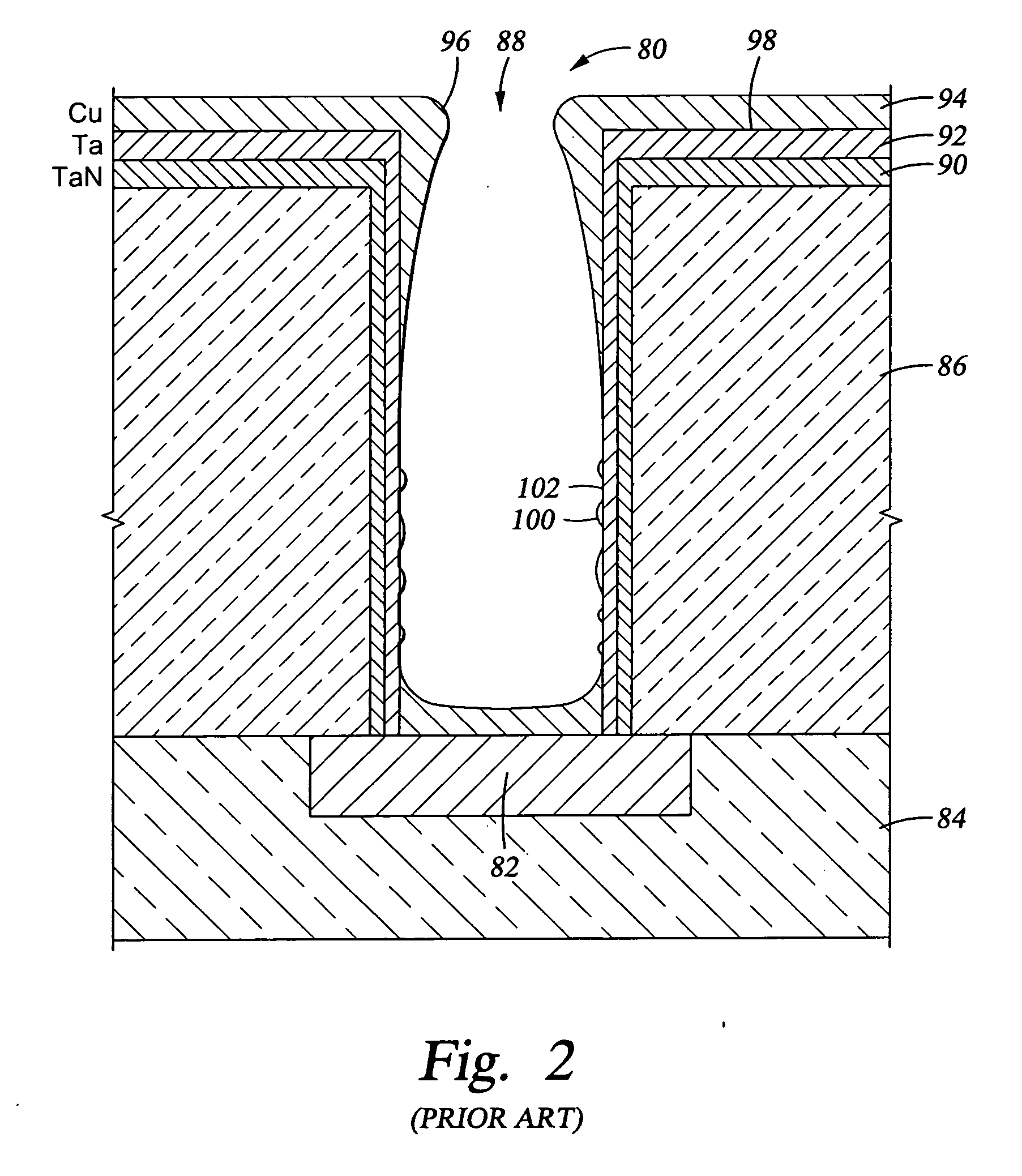Integrated process for sputter deposition of a conductive barrier layer, especially an alloy of ruthenium and tantalum, underlying copper or copper alloy seed layer
a technology of conductive barrier layer and integrated process, which is applied in the direction of resistive material coating, chemical vapor deposition coating, solid-state devices, etc., can solve the problems of loss of insulating characteristics, copper cannot directly contact the dielectric layer, and copper does not adhere well to oxide, etc., to achieve effective interfacial barrier
- Summary
- Abstract
- Description
- Claims
- Application Information
AI Technical Summary
Benefits of technology
Problems solved by technology
Method used
Image
Examples
first embodiment
[0042] a novel copper interconnect liner structure 110 is illustrated in the cross-sectional view of FIG. 3. A barrier layer 112 of an alloy of ruthenium and tantalum is deposited directly over the upper-level dielectric layer 86 and onto the sidewalls of the via hole 88. The RuTa alloy is one type of a larger class of refractory noble alloys to be discussed later. A refractory noble alloy is a metal so it is electrically conductive and can be deposited by magnetron sputtering using a target of the desired alloy composition. A copper seed layer 114 is deposited over the RuTa barrier layer 112 to serve as a plating electrode and as a seed for the copper filled into the remaining portion of the via hole 88 by electrochemical plating (ECP). The excess copper deposited above the top of the via hole 88 is thereafter removed by chemical mechanical polishing (CMP). Although Sun et al. have suggested in U.S. Patent Application Publication 2006 / 0063375-A1 that a RuTa layer can serve as a see...
second embodiment
[0077] a contact liner structure 250, illustrated in the cross-sectional view of FIG. 14, includes the TaN barrier layer 182 in both the contact holes 224, 226 overlain by the compositionally differentiated near-noble refractory alloy layers 230, 236. Since the TaN barrier layer 182 may be commonly deposited into both contact holes 224, 226 by ALD, a joint 252 is required only between the two alloy layers 230, 236.
third embodiment
[0078] a contact liner structure 260, illustrated in the cross-sectional view of FIG. 15, eliminates the TaN barrier layer 182. Instead, two near-noble refractory alloy layers 230, 236 directly contact the dielectric layer 222 as well as the two wells 216, 218. This embodiment has the advantage of not needing the removal of the TaN barrier layer at the bottom of the two contact holes 224, 226.
[0079] The compositions are graded to better match the work functions of the p-contact layer 232 and the n-contact layer 238 to the p-well 216 and the n-well 218 respectively. Generally, a tantalum-rich RuTa alloy, that is, Ru−Ta+, has a work function better matched to n-type silicon and a ruthenium-rich RuTa alloy, that is, Ru+Ta−, has a work function better match to p-type silicon.
[0080] The RuTa layer, particularly when formed as an amorphous metal, allows the elimination of the copper seed layer. A copper metallization structure 270 illustrated in the cross-sectional view of FIG. 16 includ...
PUM
| Property | Measurement | Unit |
|---|---|---|
| pressure | aaaaa | aaaaa |
| thickness | aaaaa | aaaaa |
| thickness | aaaaa | aaaaa |
Abstract
Description
Claims
Application Information
 Login to View More
Login to View More - R&D
- Intellectual Property
- Life Sciences
- Materials
- Tech Scout
- Unparalleled Data Quality
- Higher Quality Content
- 60% Fewer Hallucinations
Browse by: Latest US Patents, China's latest patents, Technical Efficacy Thesaurus, Application Domain, Technology Topic, Popular Technical Reports.
© 2025 PatSnap. All rights reserved.Legal|Privacy policy|Modern Slavery Act Transparency Statement|Sitemap|About US| Contact US: help@patsnap.com



